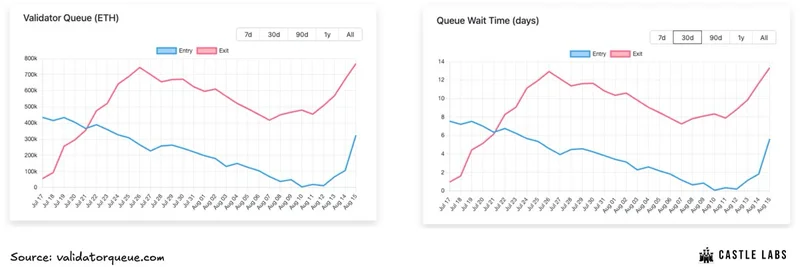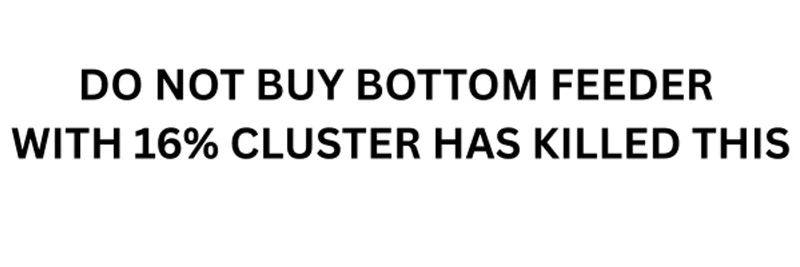If you've been keeping an eye on the Ethereum network lately, you might have noticed some unusual activity in the validator queues. A recent post from Castle Labs highlights a significant imbalance, with the exit queue ballooning to 767.53k ETH while the entry queue sits at 324.54k ETH. This comes on the heels of a thread by DeFi expert Ignas, who pointed out a record 671k ETH—equivalent to about $3.2 billion—in the unstaking queue, with wait times stretching up to 12 days.
These charts from validatorqueue.com, shared by Castle Labs on X, show a clear trend: exits are outpacing entries, leading to longer wait times for those looking to unstake their ETH.
What's Driving the Exodus?
The surge in exits kicked off around mid-July, right when borrowing rates on platforms like Aave spiked to a whopping 18%. This was triggered by massive withdrawals—around 167k ETH—from the protocol. As Castle Labs explains, much of this can be traced back to the unwinding of "ETH looping strategies."
For the uninitiated, looping strategies involve depositing liquid staking tokens (LSTs) like stETH into a lending platform, borrowing ETH against them, swapping that borrowed ETH back into more LSTs, and repeating the process. It's a way to amplify exposure to staking yields while leveraging borrowed funds. The key to profitability? ETH staking yields need to exceed the borrow rates.
But when borrow rates skyrocketed, the math stopped adding up. Loopers started pulling out, swapping assets back to native ETH, or initiating unstakes, which piled pressure on the exit queue.
Balancing Acts: Institutional Entries and DATs
It's not all doom and gloom, though. On the flip side, the entry queue is getting a boost from emerging Digital Asset Treasury (DAT) companies and growing institutional interest in Ethereum staking. These players are stepping in, depositing ETH to become validators and help secure the network.
According to Castle Labs, this institutional push is helping to offset some of the exit demand. Wait times for entries are around 6 days, compared to 13 days for exits—a sign that while unstaking is hot right now, fresh capital is still flowing in.
Implications for ETH Holders and the Broader Ecosystem
For everyday ETH holders or those involved in DeFi, this queue imbalance could signal shifting market sentiments. Higher unstaking might put downward pressure on ETH prices in the short term as more tokens hit the market. However, the influx from institutions could stabilize things, reinforcing Ethereum's position as a go-to for staking rewards.
If you're deep into DeFi, check out the full thread by Ignas on X for more details, including visuals on the queue trends. Castle Labs credits Galaxy HQ research for some of the insights, so it's worth following those leads if you want to dive deeper.
Staying informed on these dynamics is crucial, especially as Ethereum continues to evolve post-Merge. Whether you're staking, trading, or just hodling, understanding validator queues can give you an edge in navigating the crypto landscape.
Looking Ahead
As the network adjusts, keep an eye on borrow rates and staking yields—they're the pulse of these strategies. If rates normalize, we might see looping make a comeback, balancing the queues once more. For now, this episode underscores the interconnectedness of DeFi protocols and Ethereum's core staking mechanism.
What do you think— is this a temporary blip or a sign of bigger shifts? Drop your thoughts in the comments below!




